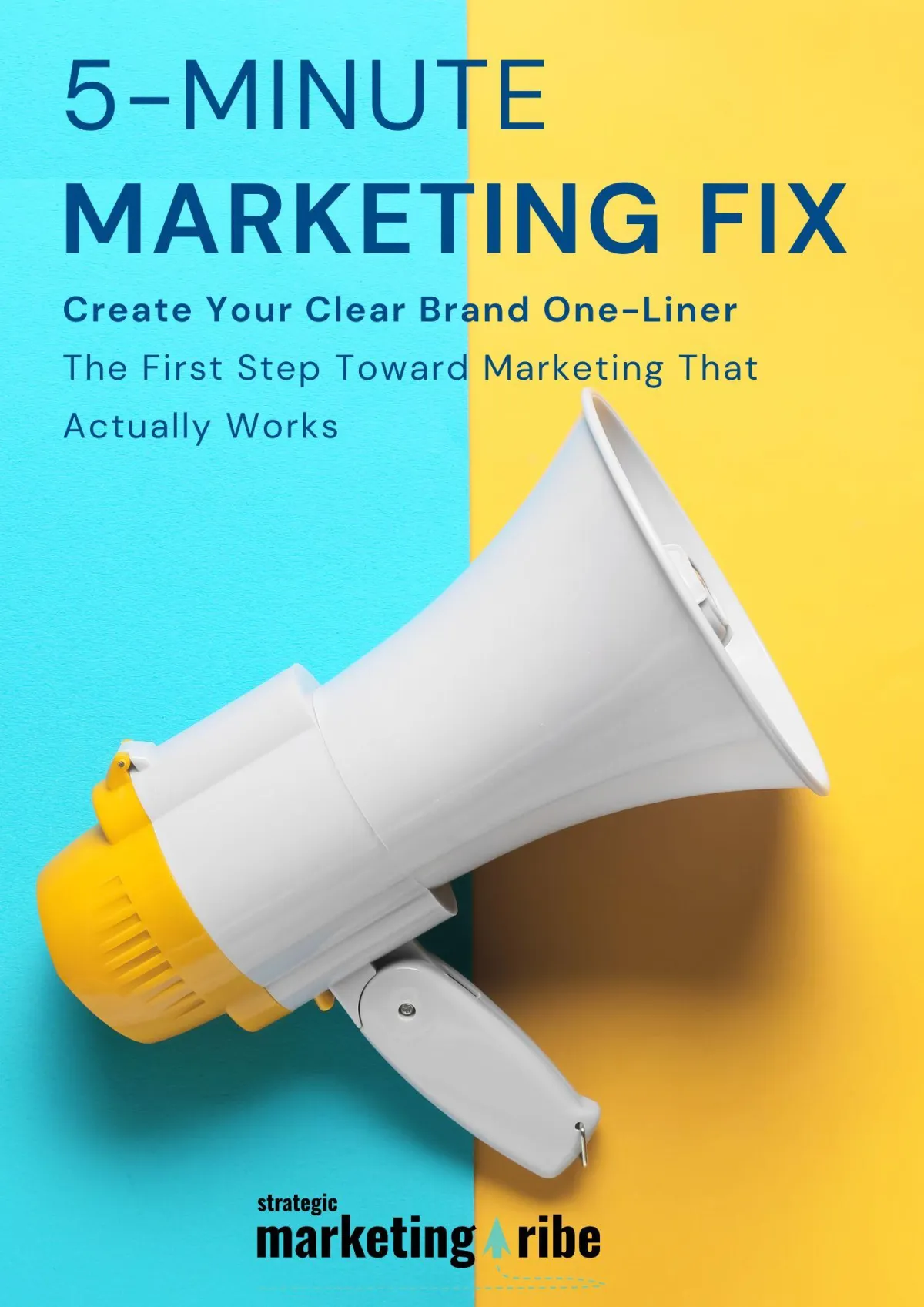NEWS, MEET STRATEGY
Real news, real insights – for small businesses who want to understand what’s happening and why it matters.

Marketing Automation’s Transparency Gap Is Costing You Sales
By Vicky Sidler | Published 21 August 2025 at 12:00 GMT
Marketing automation was supposed to save time, boost results, and free up your brain for the “fun” part—strategy. Instead, it’s starting to feel like we’ve all been locked in a self-driving car that won’t tell us where it’s going.
Recent insights from MarkLives paint a familiar picture: businesses are optimising for speed over sense, handing more control to “black box” algorithms that run on data no one gets to see. Sure, the dashboards look impressive. But if you can’t see how the results are generated, can you actually improve them? Or are you just hoping the machine likes you?
TL;DR
Hyper-automation often hides decision-making inside “black boxes”
Platforms like Google’s Performance Max limit transparency
41% of programmatic ad spend reaches actual impressions—the rest leaks away
Efficiency without effectiveness kills growth
Need help getting your message right? Download the 5-Minute Marketing Fix.
Table of Contents
Marketing Automation’s Transparency Gap Is Costing You Sales
Efficiency Without Effectiveness = Expensive Mistakes:
So, What Should Small Businesses Do?
1. Audit Your Platforms’ Transparency:
2. Measure What Actually Matters:
Automation Should Support Strategy, Not Replace It:
Try the 5-Minute Marketing Fix:
LLM Visibility: The SEO Shift You're Missing
AI Visibility: What ChatGPT, Google AI, and Perplexity Cite Most
Advertise Your Business on $500—Here's What Works
FAQs About Marketing Automation’s Transparency Gap
What is the “transparency gap” in marketing automation?
Why is too much automation a problem for small businesses?
How does Google Performance Max fit into this issue?
What does the statistic “41% of programmatic ad spend reaches real impressions” mean?
How can I reduce my reliance on “black box” automation?
Efficiency Without Effectiveness = Expensive Mistakes:
Ryan Sauer of Redwood Analytics sums it up well: automation is creating a generation of marketers more focused on process than purpose. If the algorithm says it’s “working,” who’s going to argue? The problem: you can’t reverse-engineer success if you can’t see what caused it.
And the big platforms know it. Nicolas van Zyl from Naritive Global points out that tools like Google’s Performance Max might boost performance stats, but they also strip away transparency. Think of it as a Trojan horse—it promises efficiency but quietly makes critical thinking optional.
The $22 Billion Problem:
Greer Hogarth from RAPT Creative takes the gloves off. In programmatic advertising, only 41% of your budget actually makes it to real, viewable impressions. The rest? Lost in a tangle of middlemen and “tech tax.” According to the ANA Programmatic Transparency Benchmark, that’s $22 billion globally being allocated inefficiently.
And for South Africa—where 83% of ad revenue will come from programmatic by 2029—this isn’t just a tech gripe. It’s a looming growth problem. You can’t fix what you can’t see.
The Metrics Obsession:
Somewhere along the way, marketers started obsessing over metrics instead of meaning. Clicks, impressions, CPMs—vanity numbers we celebrate while ignoring the fact that they may be optimising the wrong things entirely. As Lynette Naidoo of Publicis Media says, automation should enhance outcomes that matter, not just crank out activity.
Here’s the litmus test: if your automated campaign is delivering cheaper clicks but your sales pipeline is drying up, your efficiency is an expensive illusion.
And here’s where it gets personal—have you ever asked ChatGPT a question about a topic you know well, only to get a wildly wrong answer? I have. Worse, with a bit of nudging, I’ve been able to get it to completely change its stance. AI hallucinations are real, and AI can be easily swayed. Now imagine that same black-box logic managing your marketing budget. Do you really want an algorithm that can “make things up”—or be manipulated—deciding where your ad spend goes?
So, What Should Small Businesses Do?
You don’t need a corporate analytics department to avoid being blindsided by automation’s dark side. You just need a plan for balance—letting automation do the heavy lifting without letting it run the whole show.
Start here:
1. Audit Your Platforms’ Transparency:
If your ad platform doesn’t let you see where your money goes, that’s a red flag. Ask vendors for reporting that shows placements, targeting breakdowns, and actual impression data.
2. Measure What Actually Matters:
Swap out vanity metrics for ones tied to revenue and retention—cost per lead, customer lifetime value, and conversion rate. If your automation dashboard doesn’t report these, build your own spreadsheet and track them manually.
3. Keep Humans in the Loop:
Automation can spot patterns, but only humans can understand context. Schedule monthly reviews to cross-check automated decisions against your business goals.
Automation Should Support Strategy, Not Replace It:
The irony is that automation can be a powerful growth tool—when it’s paired with human insight. But hand over too much control, and you’re just a passenger. And not in a comfy limo—more like a driverless Uber that’s “optimising” your route to visit three sponsors along the way.
If you want automation to serve your business (not the other way around), start with a clear message, a clear goal, and a clear understanding of what “success” actually looks like.
Try the 5-Minute Marketing Fix:
In a world where algorithms dictate what gets seen, the one thing you can control is your message. The 5-Minute Marketing Fix is a free tool to help you write a one-liner that tells people exactly what you do—and why they should care—before they scroll.
Because in marketing, speed without direction just gets you nowhere faster.
Related Articles
LLM Visibility: The SEO Shift You're Missing
If you’re worried about “black box” ad platforms hiding where your budget goes, you’ll want to see how AI tools may be hiding where your brand shows up. This article explains how large language models could be quietly directing customers to your competitors—without you knowing.
AI Visibility: What ChatGPT, Google AI, and Perplexity Cite Most
Just like programmatic ads lose money in the shadows, AI platforms have their own mysterious preferences that shape what people see about your business. Learn why understanding these citation patterns is the next big visibility challenge.
Advertise Your Business on $500—Here's What Works
Feeling burned out by opaque automation? This guide shows you how to run small, transparent campaigns where you can track every dollar and result. It’s marketing you can actually understand—no mystery sponsors, no hidden detours.
FAQs About Marketing Automation’s Transparency Gap
What is the “transparency gap” in marketing automation?
The transparency gap refers to the lack of visibility into how automated ad platforms make decisions, spend budgets, and report results. Many tools operate as “black boxes,” meaning you can’t see the data or logic behind the outcomes they produce.
Why is too much automation a problem for small businesses?
While automation saves time and improves efficiency, it can prioritise speed over strategy. Without visibility and human oversight, platforms may optimise for metrics that don’t actually grow your business, such as cheap clicks instead of quality leads or sales.
How does Google Performance Max fit into this issue?
Google’s Performance Max is a highly automated campaign type that offers limited insight into placements, targeting, and performance drivers. While it can deliver results, its lack of transparency makes it harder to understand why those results happen—and whether they align with your goals.
What does the statistic “41% of programmatic ad spend reaches real impressions” mean?
It means that in programmatic advertising, less than half of the money you spend results in actual, viewable ad impressions. The rest is lost to inefficiencies, intermediaries, and non-quality placements—a clear sign of the need for better accountability and reporting.
How can I reduce my reliance on “black box” automation?
You can start by auditing your platform reporting, tracking metrics tied directly to revenue, and scheduling regular human reviews of automated decisions. Using automation to support — not replace—strategic thinking is key.
What metrics should I track instead of vanity numbers?
Focus on metrics that measure business impact, such as cost per lead, customer lifetime value, and conversion rate. These give you a clearer picture of effectiveness than clicks, impressions, or CPMs alone.
How does the 5-Minute Marketing Fix help in this context?
The 5-Minute Marketing Fix helps you create a clear one-liner that communicates what you do and why it matters. This clarity makes it easier to set the right goals for automation and measure whether it’s truly supporting your business growth.

Created with clarity (and coffee)







